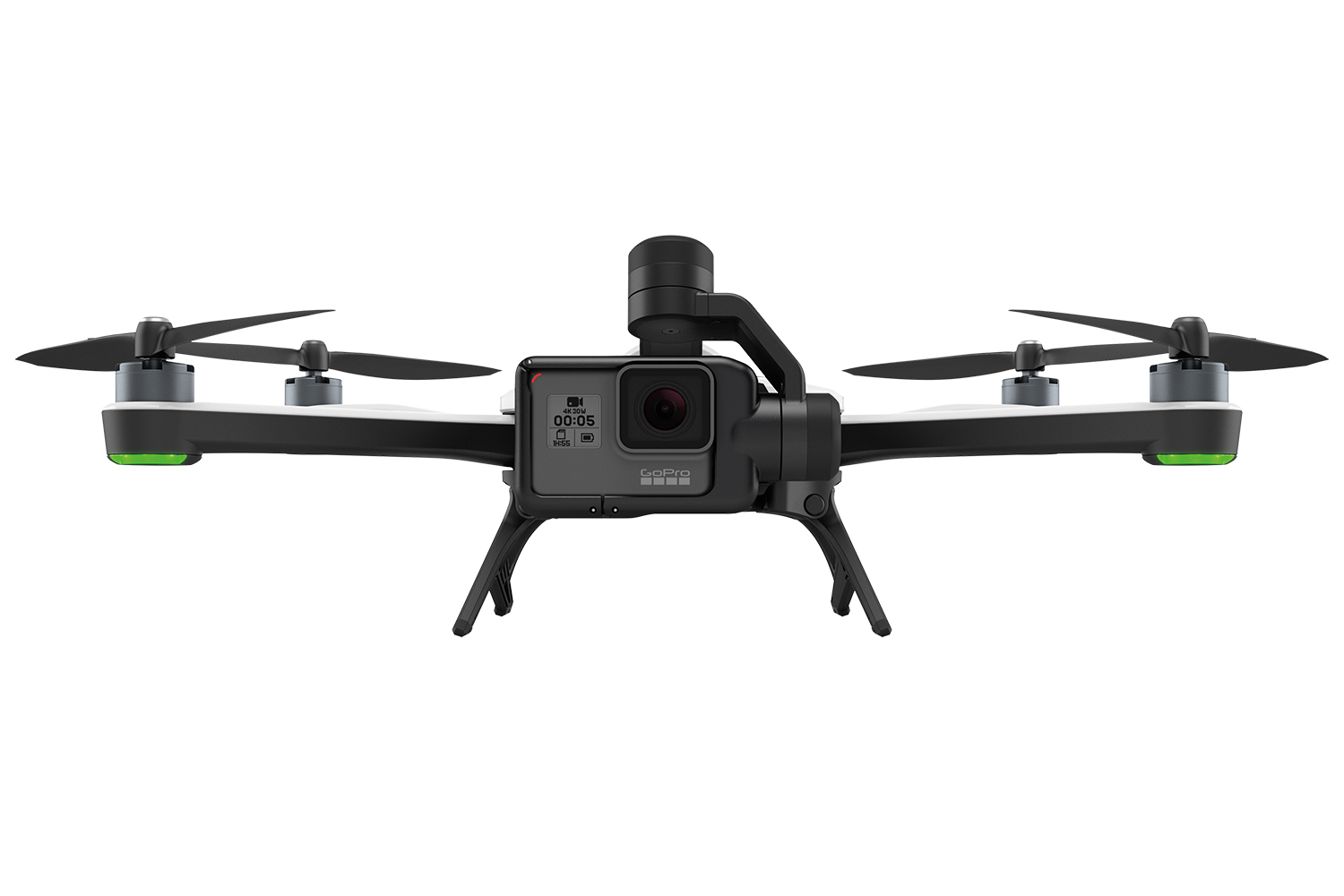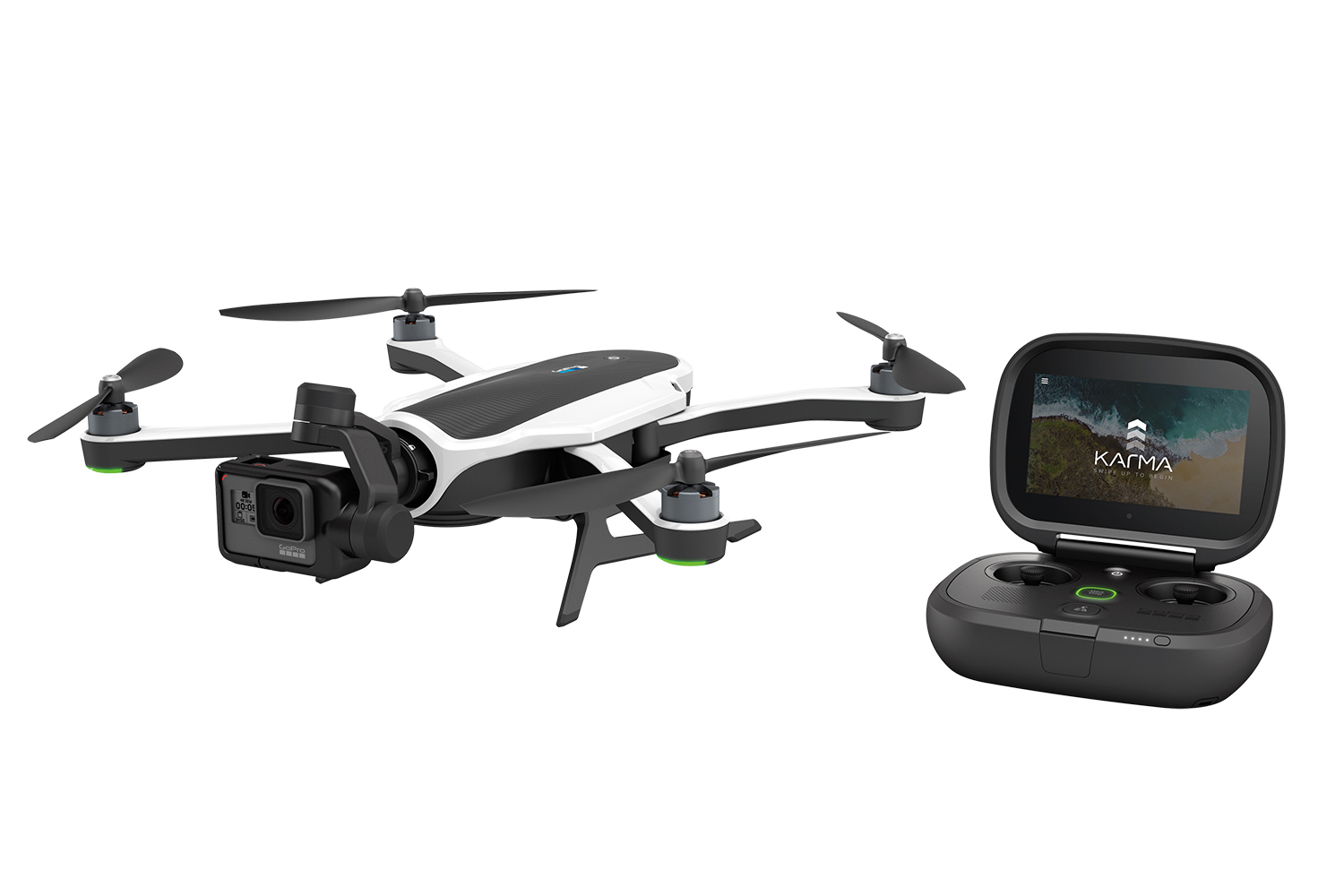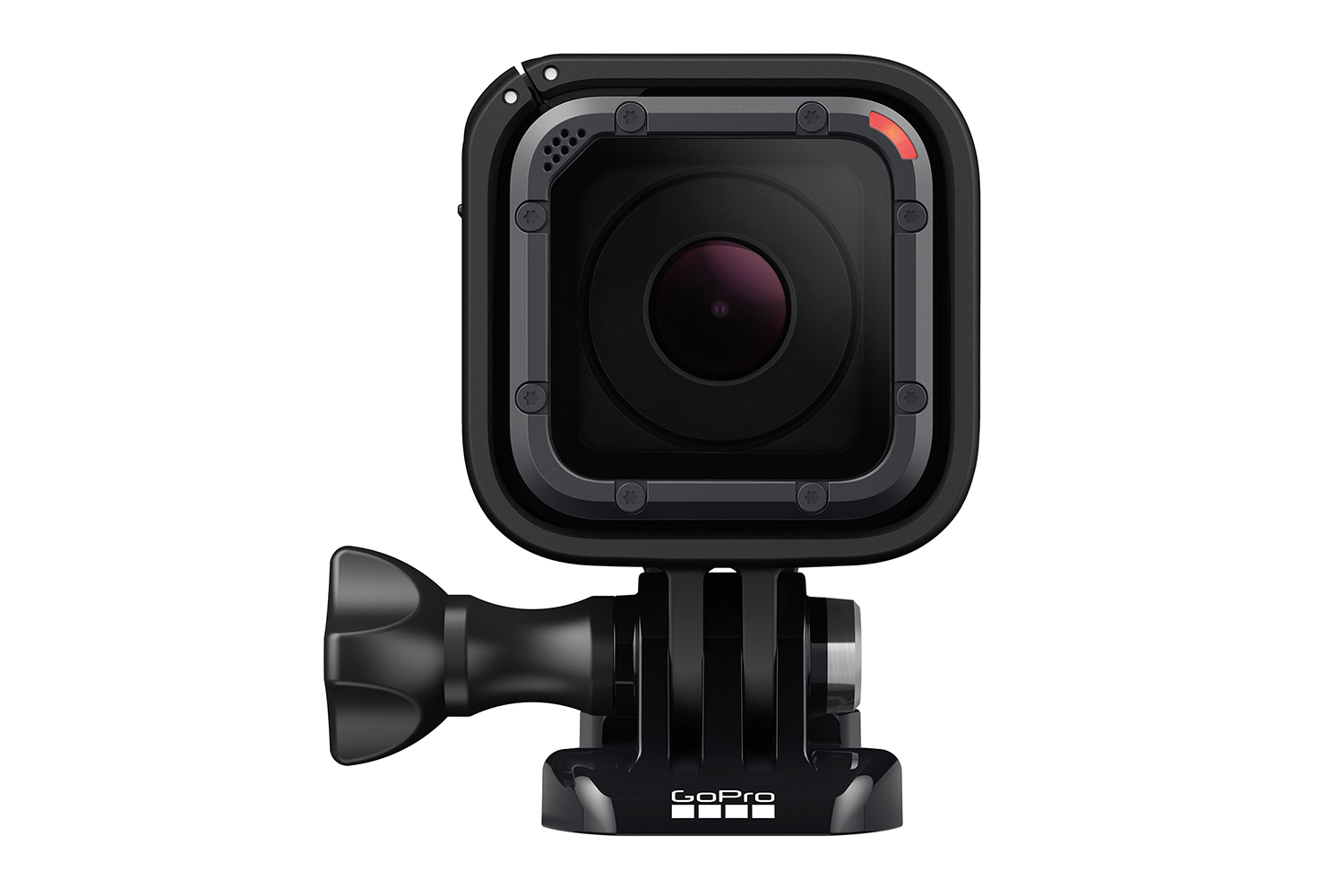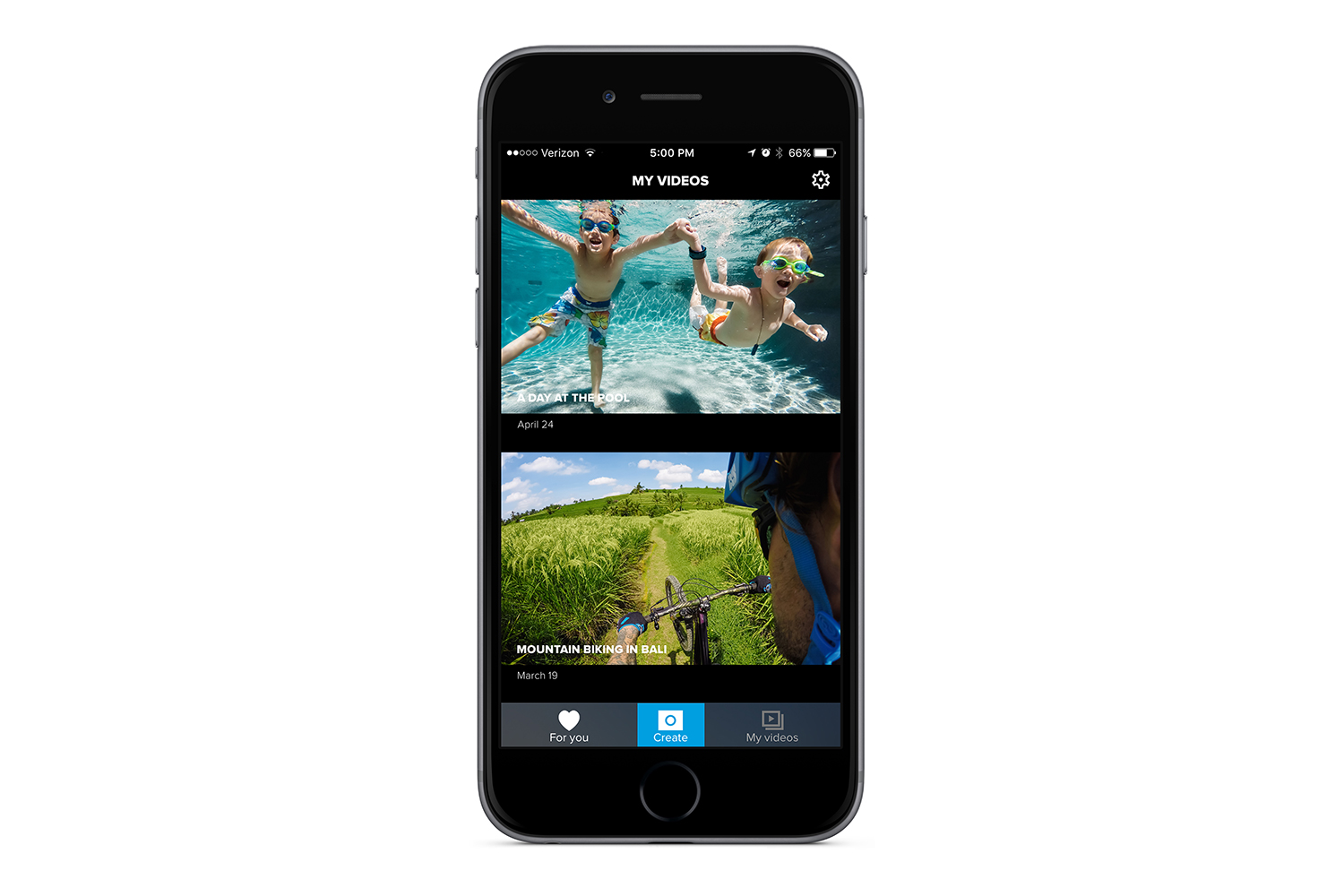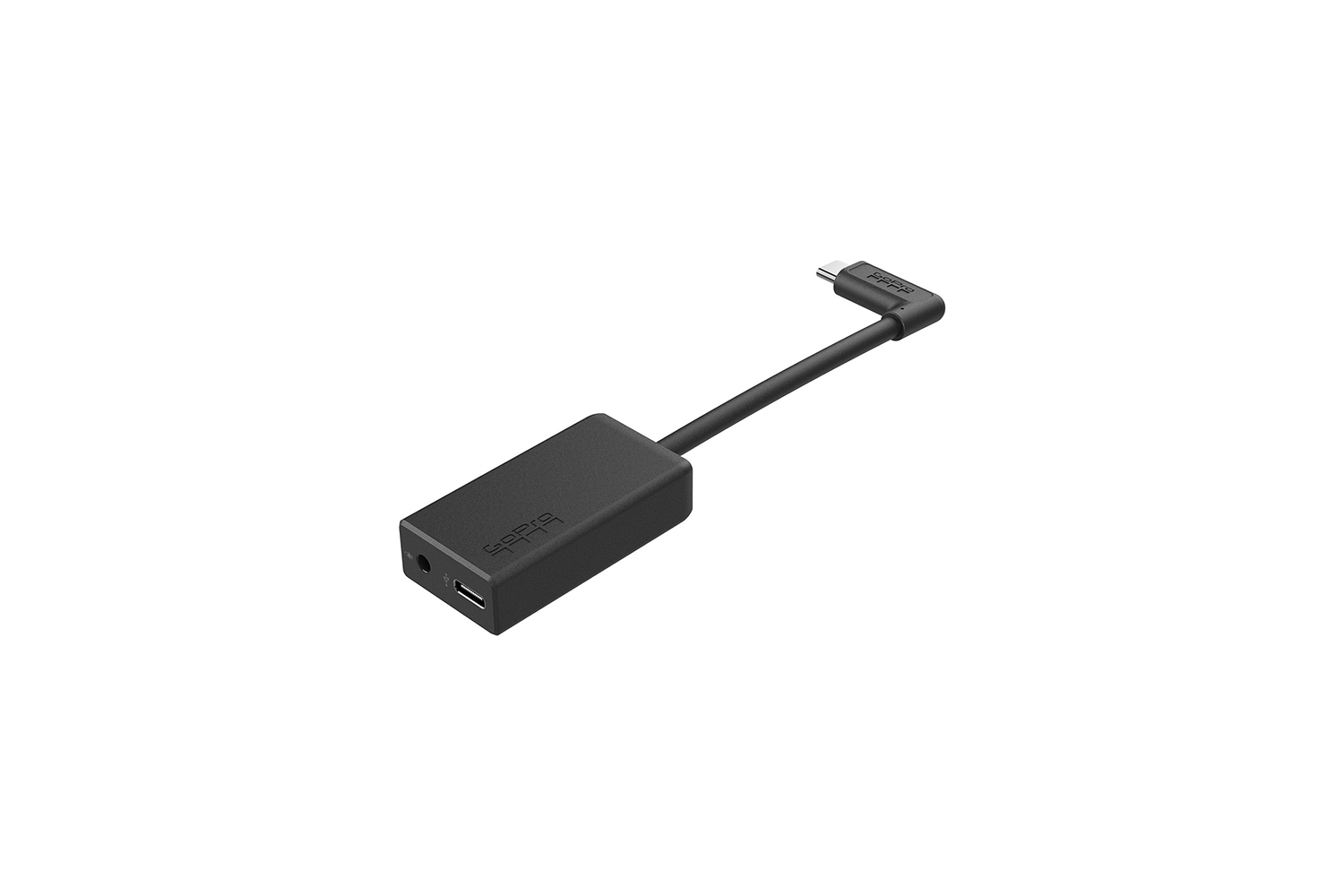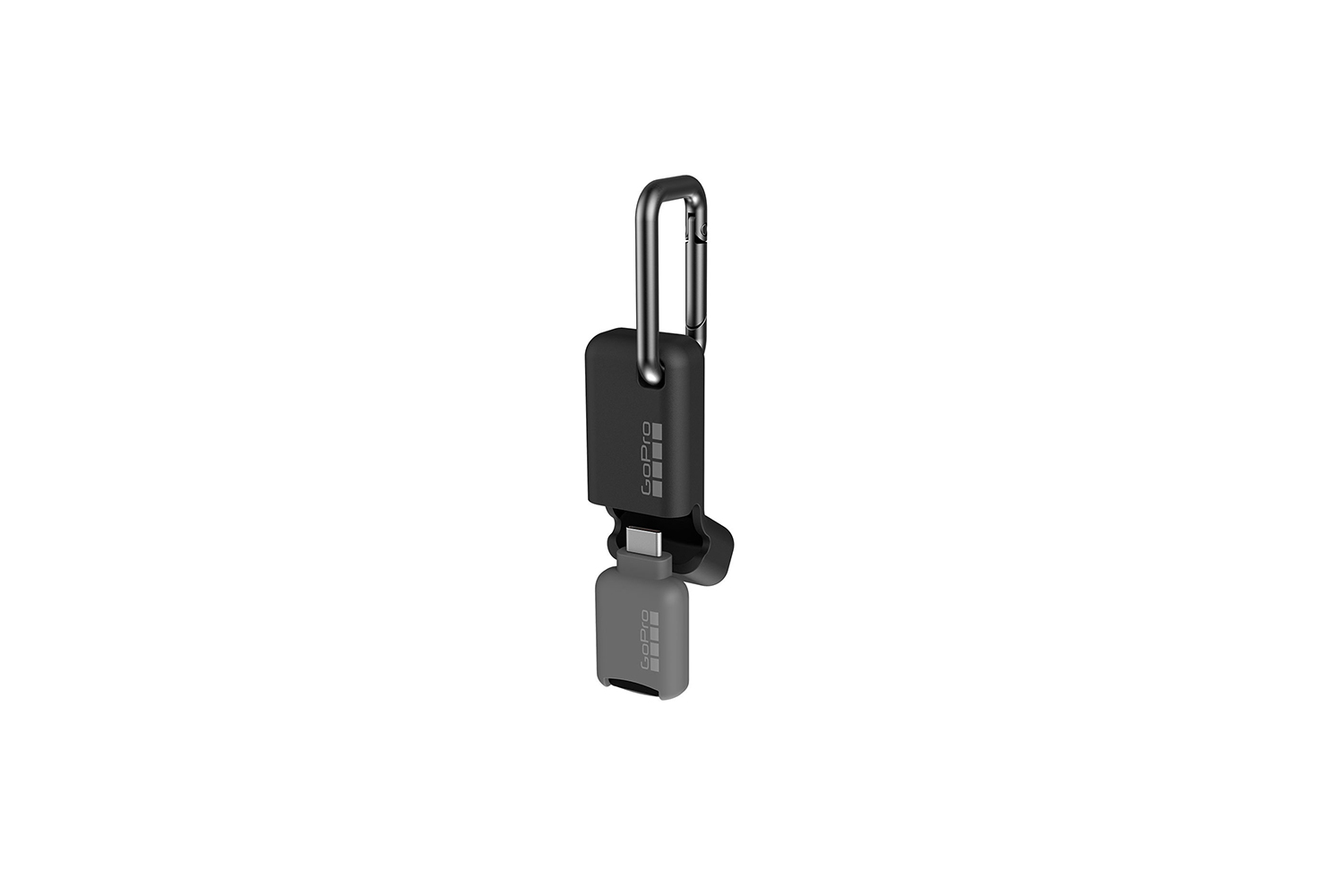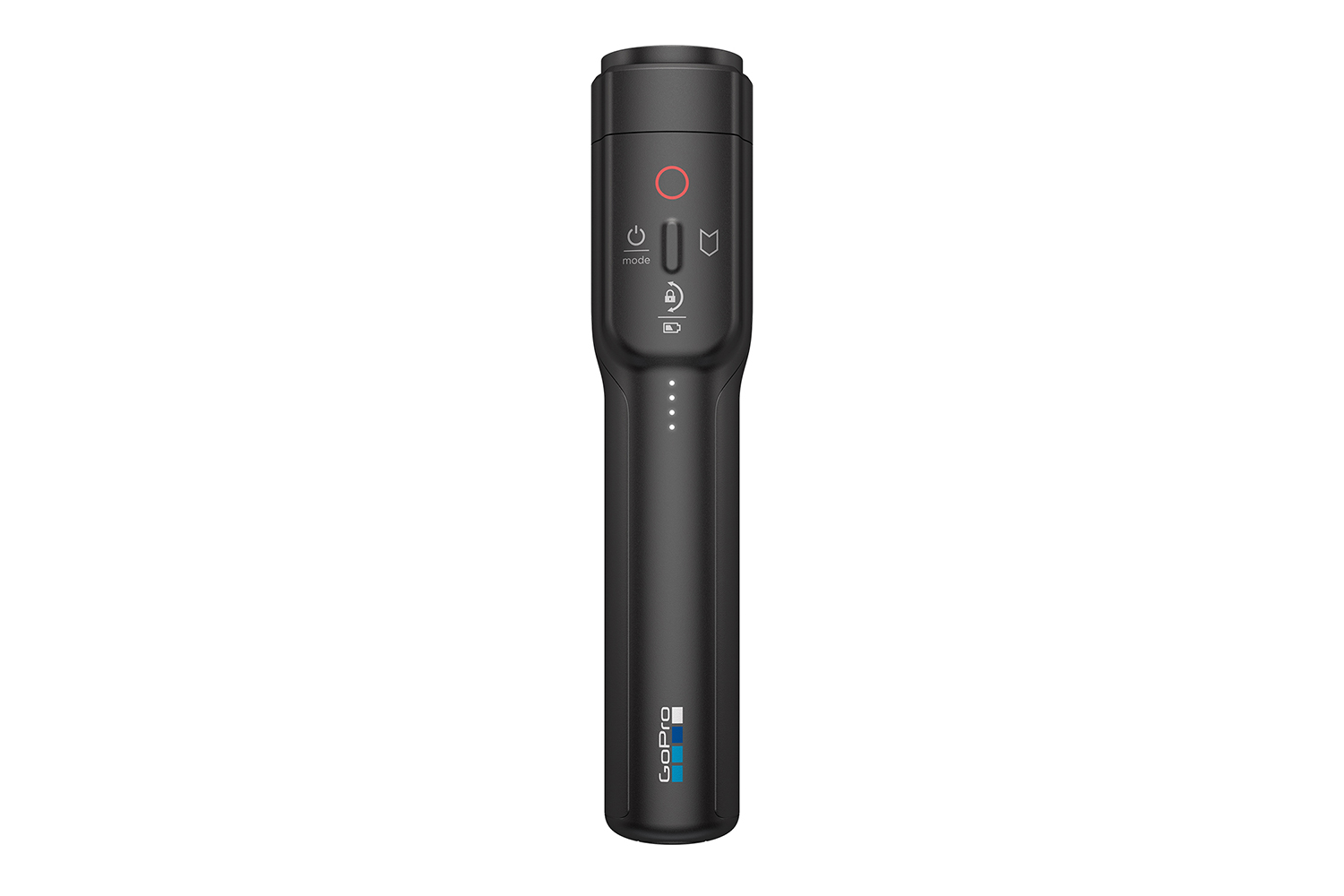GoPro made its biggest product announcement to date on September 19, with the reveal of the highly anticipated Karma drone and the next-generation of the Hero camera, the Hero5. The company is also introducing a cloud-based subscription service, new accessories, and the desktop version of its Quik mobile app.
Connecting all the products and services is a new focus on giving users an “end-to-end storytelling” situation – from the hardware to capture the content and the software to edit and share. It’s one way the company is differentiating itself from lower-priced competitors that claim to offer products similar to GoPro’s.
“We want to help you become great storytellers,” said GoPro founder and CEO, Nick Woodman, during the company’s launch event in Squaw Valley, California (we were invited guests of GoPro, but all opinion is our own).
In a Q&A session, Woodman elaborated on what GoPro strives to be with its products and services, and that it’s more than just a consumer electronics company.
“The ‘action’ part of what we enabled is just a subset of the GoPro equation,” Woodman said, in reference to the action cam category that GoPro, arguably, created. “GoPro is more than action. People don’t buy GoPro for the hardware, but for the cool stories and experiences that it enables. GoPro is this experience sharing company. It just happens our products have electronics in them.”
As for the competition, “I don’t think anyone is close to us in hardware, and I don’t think anyone is in the same universe when it comes to stories,” Woodman said.
While it’s easy dismiss Woodman’s words as marketing (even he commented on that), he said GoPro’s employees truly believe in the products and what they do. He also acknowledged the missteps GoPro made in flooding the market with too many products, and the Karma’s delay.
“It’s not easy to develop products like this,” Woodman said. “It took time to build the team we got. We had to lose a bit of face, but we don’t want to sell customers something that doesn’t exceed their expectations.”
With that, here’s a quick look at the new products.
Karma drone
As the recent teasers hinted, we knew Karma would have a small form-factor and would be easy to maneuver. We didn’t know much else, though, except that its launch would be delayed until late 2016.
Well, the wait is finally over: Karma is a small, foldable drone that fits inside an included backpack. But the company markets it as more than just a drone. It incorporates a three-axis image-stabilization grip (gimbal) that’s removable, which can be used handheld (with a powered controller called the Karma Grip, similar to DJI’s Osmo) or mounted to almost any GoPro mount, like the Seeker backpack. (The Karma Grip will also be sold separately, for those who want stabilization but not the drone). One of the issues with the Hero cameras is that they lack any sort of internal image stabilization, and while the Hero5 now includes electronic IS, the Karma’s grip offers greater control.
The stabilizer is placed at the front so that when the camera is recording, it doesn’t capture the propellers in the shot, according to GoPro. On its own, the stabilizer was effective in keeping the camera in position during our hands-on. You can start/stop recording on the grip handle, and reposition the gimbal to the center.
To control Karma itself, there’s a gamepad-style controller with a display that lets you see what the drone sees, without needing to pair with a phone. You can manually operate the drone, or set it to automatically fly to capture Hollywood-like production. You can start/stop recording using a right button, and manipulate the gimbal up and down with a left button. There is a “passenger mode” that lets a second person control the camera through a phone or tablet; this mode requires a new app that works with the drone.
GoPro said the Karma is capable of flying for 20 minutes – shorter in windy situations, such as what we encountered during our brief hands-on. The battery takes two hours for a full charge. The controller has a battery indicator onscreen at all times, and will warn you when it’s low. It will automatically head “home” when battery is near dead.
Flying the Karma was one of the easiest experiences we had. It’s not as compact as we had hoped, but it will fit inside most backpacks (we would use the sleek included backpack instead). If you know how to use a gaming controller, you essentially know how to fly it. After powering up (for safety, you need to hold down the start button for a three seconds), you use the left controller to ascend, descent, and rotate, and the right controller to pitch forward, backward, left, or right. It’s fast and stable, able to travel up to 35 miles per hour (limited by regulations). With little guidance from a GoPro flight engineer, we were able to quickly master flying. Karma is clearly geared toward the everyday consumer, but with many professional videographers incorporating GoPros in their work, there could be some appeal here.
However, there are some features that could turn off advanced hobbyists. In this version, there is no obstacle avoidance, subject recognition, or follow-me, which you’ll find in drones like the Phantom 4 from DJI. There is no word if any of these features could be turned on with a firmware update, but GoPro said it left out these features intentionally.
“We don’t think [those features] are at a place where they deliver what consumers expect,” Woodman said. “We really want to exceed customer expectations. We want to focus on what Karma is: compact and convenient.”
DJI users would probably disagree, but GoPro doesn’t seem to be targeting the DJI customer with the Karma – at least, not with this first version. But it’s obvious GoPro has those advanced features on its roadmap, if Karma “takes off” with consumers.
You can purchase the Karma on its own for $799, or with the new Hero5 Session for $999 or Hero5 Black for $1,099. Karma will also work with the Hero4 cameras. Karma will hit shelves on October 23. The Karma Grip will sell for $300, and will be available on October 23.
Karma needs “not only be a flying solution, but a handheld solution and a mounting solution. In some sense, Karma has become the ultimate GoPro,” Woodman said.
Hero5 Black
GoPro calls the Hero5 Black its “most power, easy-to-use GoPro ever.” The Black designation is used for flagship cameras, although GoPro didn’t announce a companion Silver edition. But it seems GoPro has taken the best things about the Hero4 Silver and implemented it into the Hero5 Black.
Like the Hero4 Black, the Hero5 Black shoots video up to 4K at 30 frames per second (fps) and still images up to 12 megapixels, but is now able to shoot RAW and WDR, or wide dynamic range (GoPro is emphasizing professional quality). GoPro says it can record distortion-free wide-angle video and photos with a new Linear-View setting, and audio has been improved, thanks to a three mics that pick the best audio quality, with wind noise reduction. As mentioned, the camera now has electronic image stabilization.
But the new camera now has a 2-inch touch display with simplified controls, similar to what we’ve been getting (and loving) with the Hero4 Silver or a Hero4 Black with an LCD backpack accessory attached. The reason why the Hero4 Black lacked an LCD is due to power and overheating issues. This suggests GoPro has found a way manage heat. GoPro is finally moving away from the Mini USB port and is now using USB Type-C in the Hero5 Black and the Hero5 Session.
Also new is voice control with support for seven languages, which makes it easier to control the camera without having to touch it. There is one-button control to start recording, and you can upload content to the new cloud service while the camera is charging. And, there’s now built-in GPS to geo-tag your content.
The Hero5 black is now waterproof without a housing, down to 33 feet (anything lower would still require one, we suspect). As with previous cameras, the Hero5 Black is compatible with all existing accessories, as well as Karma.
In our brief hands-on, the Hero5 Black took plenty of abuse, from being mounted to RC cars riding over rocks, to falling out of pockets and onto the dirt ground. Even without the housing, it’s robust as is. We love the new user interface on the touchscreen and the new user experience. Navigating through menus and changing settings is much more fluid than prior Hero cameras with LCDs; there’s even a brief tutorial during the first use that guides you through the new UI/UX. As for voice control, it works well – so well that one command accidentally triggered off another user’s camera. While resolution remains the same as the Hero4 Black, the Hero5 Black’s electronic IS should make videos less nauseating to watch. However, EIS does decrease the field of view by 10 percent, which isn’t all that bad.
With the Hero5 cameras, GoPro will be introducing a new mobile app, called Capture. It will replace the existing GoPro app, however it will have the same functions at launch.
Despite it being a flagship product, GoPro is dropping the price, to $399. The camera goes on sale on October 2.
“You’re getting a lot of GoPro for $399,” Woodman said. “Hero5 Black is the camera we always wanted to make. It just took us 14 years to get here.”
Hero5 Session
The Hero5 Session was unexpected, but nice to see. We aren’t sure if this is slated as an entry-level camera like the Hero Session, but the specs make us think this may be the replacement for the Silver model.
The camera has the same small form-factor and controls of the Hero Session, but it’s a much stronger camera. It can shoot 4K video at 30 fps and photos up to 10 megapixels. It has many of the features in the Hero5 Black, including voice control, Linear-View, and electronic IS. But it lacks RAW/WDR support, GPS, and a stereo mic. However, the size and weight would make it an ideal companion for Karma.
Using the Hero5 Session is very similar to the Hero Session, although the menu options are slightly different.
The Hero5 Session will sell for $299 and will also go on sale on October 2.
GoPro Plus
Offloading content from a camera can be a chore, and GoPro is looking to make it less painful with the new GoPro Plus subscription service. While a Hero5 camera is charging, it can upload photos and videos to the cloud, which can then be accessed anywhere and on any device. Included in the subscription is use of an expansive library of music, 20-percent discount on mounts and accessories at GoPro.com, members-only apparel, and support.
The service will cost $5 a month after a free trial, and will launch on October 2 in the U.S., and hitting new markets in January 2017.
Quik App
Quik is a mobile app GoPro acquired that makes it easy to quickly compile a video from clips, automatically finding what it thinks are the best moments (or anything that the user manually tags) and adding music. GoPro is bringing that same ease-of-use to the desktop. While the mobile app is effective for on-the-go editing, the desktop version should give you greater control over the editing process.
New Accessories
GoPro is adding a small Micro SD keychain card reader to its accessories lineup, called the Quik Key. The gadget connects to an iPad or iPhone’s Lightning port, and lets you easily pull content off a memory for editing or backing up. It’s very similar to a product made by Lexar, and we would not be surprised if Lexar makes this product (Lexar is part of GoPro’s Developer Program).
GoPro also introducing a new voice-activated remote control, called Remo, that also extends the voice range of the Hero5 cameras.


